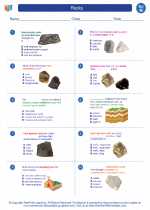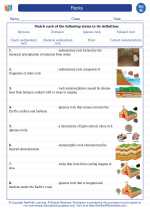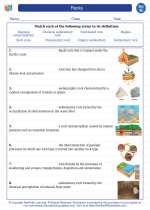Climate Change
Climate change refers to significant and long-term changes in the average weather patterns of a region, which can include changes in temperature, precipitation, and wind patterns. It is largely driven by human activities, such as the burning of fossil fuels, deforestation, and industrial processes, which release greenhouse gases into the atmosphere and contribute to global warming.
Causes of Climate Change
There are several key factors that contribute to climate change:
- Burning of Fossil Fuels: The combustion of fossil fuels such as coal, oil, and natural gas releases carbon dioxide (CO2) and other greenhouse gases into the atmosphere, leading to the enhanced greenhouse effect and global warming.
- Deforestation: The cutting down of forests reduces the number of trees that can absorb CO2 from the atmosphere, leading to higher levels of greenhouse gases.
- Industrial Processes: Various industrial activities release greenhouse gases such as methane and nitrous oxide, contributing to climate change.
- Agriculture: Certain agricultural practices, such as rice cultivation and livestock farming, release methane and nitrous oxide, further exacerbating climate change.
Effects of Climate Change
Climate change has widespread and far-reaching impacts on the environment, ecosystems, and human societies, including:
- Rising Global Temperatures: The average global temperature has been steadily increasing, leading to more frequent and severe heatwaves, as well as changes in precipitation patterns.
- Sea Level Rise: Melting polar ice caps and glaciers contribute to rising sea levels, which can lead to coastal flooding and the displacement of communities.
- Extreme Weather Events: Climate change is linked to an increase in the frequency and intensity of extreme weather events, such as hurricanes, droughts, and heavy rainfall.
- Impact on Ecosystems: Changes in temperature and precipitation patterns can disrupt ecosystems, leading to shifts in plant and animal habitats, and affecting biodiversity.
- Human Health Impacts: Climate change can result in increased air pollution, spread of infectious diseases, and food and water shortages, impacting human health and well-being.
Mitigation and Adaptation
To address climate change, efforts are being made to mitigate its impacts and adapt to the changing climate:
- Reducing Greenhouse Gas Emissions: Measures such as transitioning to renewable energy sources, improving energy efficiency, and implementing policies to limit emissions aim to reduce the concentration of greenhouse gases in the atmosphere.
- Conservation and Reforestation: Protecting and restoring forests, as well as implementing sustainable land management practices, can help sequester carbon and mitigate climate change.
- Adapting to Climate Change: Developing resilient infrastructure, implementing water management strategies, and promoting sustainable agricultural practices can help communities adapt to the impacts of climate change.
Study Guide
When studying climate change, it is important to understand the causes, effects, and potential solutions to this global issue. Key topics to focus on include:
- The greenhouse effect and its role in global warming
- The sources of greenhouse gas emissions and their impact on the climate
- The evidence for climate change, including temperature records, ice core data, and sea level measurements
- The potential impacts of climate change on ecosystems, human health, and global economies
- The role of international agreements and policies in addressing climate change, such as the Paris Agreement
- The importance of individual and collective actions in mitigating and adapting to climate change
[Climate Change] Related Worksheets and Study Guides:
.◂Science Worksheets and Study Guides Eighth Grade. Rocks

 Worksheet/Answer key
Worksheet/Answer key
 Worksheet/Answer key
Worksheet/Answer key
 Vocabulary/Answer key
Vocabulary/Answer key
 Vocabulary/Answer key
Vocabulary/Answer key
 Vocabulary/Answer key
Vocabulary/Answer key
